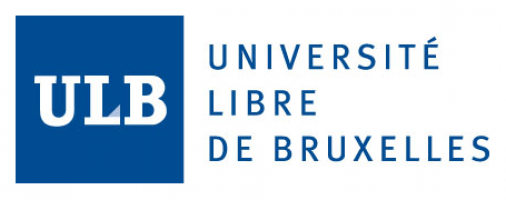What geothermal systems are suited to Brussels?
Most geothermal systems in the Brussels-Capital region are shallow systems, either closed (geothermal loop fields) or open (geothermal wells). While geothermal wells require the presence of an aquifer, geothermal loop fields can in principle be installed anywhere. The energy efficiency and sizing of these two types of system, however, depend on the ground's characteristics.
In Brussels, the specific geological conditions required for deep geothermics are not met: there is no known aquifer from which hot water could be collected.
Additionally, the urban nature of the Brussels area makes it difficult to effectively install very shallow horizontal loop fields, as such systems require considerable available surface area (generally, two to three times the home's floor space), which is generally not possible in a city.
The geothermal systems that exist in Brussels are therefore shallow ones (50 to 200 metres deep), either vertical loop fields (closed systems) of geothermal wells (open systems). It should be noted at this point that geothermal wells (open systems) are generally used for larger buildings (offices or apartment buildings). Investment costs are higher, and a return on investment is therefore only possible with a large enough building.
Ground characteristics required for shallow geothermal systems
- Closed shallow geothermal systems (vertical loop fields) can, in principle, be installed anywhere. However, their efficiency depends on the actual geological formations below the planned location, with thermal conductivity being an essential factor: it determines how easily calories stored underground can be captured by the heat exchange fluid running through the loops. The higher the ground's thermal conductivity, the higher the temperature of the heat exchange fluid when it reaches the heat pump. This means the system captures more heat from the Earth, and is therefore more efficient.
Thermal conductivity depends on the type of soil or rock. As a general rule:- The thermal conductivity of rock is higher than that of soil
- The thermal conductivity of damp rock or soil is higher than that of dry rock or soil, all other things being equal.
- Quartz has high thermal conductivity, and soil or rock consisting mainly of quartz also offers high thermal conductivity. This is the case of sand, sandstone, and quartzite.
- Open shallow geothermal systems (geothermal wells) require the present of an aquifer from which water can be collected and, generally, into which it can be re-injected.
The geothermal system's efficiency depends on the pumping rate, with higher rates increasing the system's efficiency. The pumping rate depends mainly on two properties of the aquifer:- Its permeability: more permeable aquifers allow for higher pumping rates
- Its thickness: thicker aquifers allow for higher pumping rates
The geology of Brussels
In Brussels, under the backfilling and alluvial deposits, the ground consists in practically horizontal geological layers, as shown on the geological diagram below.

Starting at the surface and progressively going deeper are alternating layers of sand, clay, and loam. At 50 to 100 metres below sea level (i.e. 70 to 130 metres below the surface) are layers of rock. First is chalk (only in the north of Brussels), then alternating layers of sandstone, quartzite, and shale.
In practice
For closed shallow geothermal systems (vertical loop fields), it is important to know precisely what layers will be encountered when drilling, because the number of loops required, as well as their depth, depends on the amount of heat to be captured from underground in order to meet the building's energy needs. The number of loops can be different for buildings with identical energy needs, depending on the geological layers and their thermal conductivity.
In order to size closed systems that use a large number of geothermal loops, it is generally recommended to perform an on-site test called a thermal response test, which is done in a previously bored hole. The principle is that a certain amount of thermal energy is injected into the loop's heat exchange fluid in order to measure its dissipation into the ground. This test produces an average conductivity value for the ground, which can then be used to size the final geothermal system. In addition, the initial study also helps determine the depth of the loops and define the total drilling length required.
As for open shallow geothermal systems (geothermal wells), there are two potential aquifers in Brussels. These are:
- The Brussels sand aquifer, which is only found at the city's highest elevations.

Area covered by the Brussels sand aquifer - The sand aquifer of the Hannut geological region, which occupies a larger area but is also deeper underground.
Given the different properties of the Brussels region's aquifers, the complexities of sizing open geothermal systems, and the permits required to install such systems in the Brussels-Capital region, on-site tests will be necessary to determine the aquifers' properties (such as their permeability and saturated thickness, among other factors).




